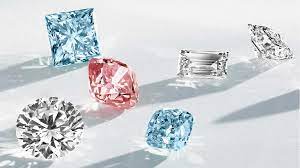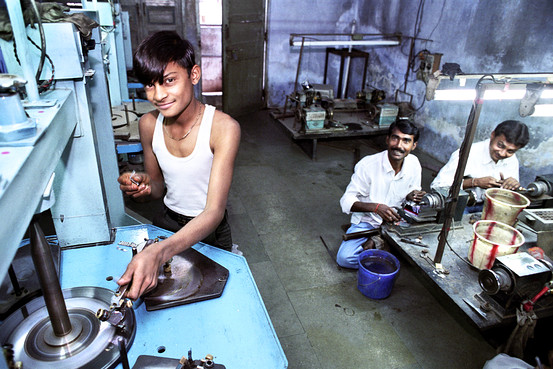A couple of weeks ago, diamond mining behemoth DeBeers announced it was closing down its lab grown diamond brand, Lightbox and focusing its efforts on producing industrial diamonds and marketing natural diamonds. With DeBeers holding a minute percentage of the lab grown market, this announcement seemed fairly insignificant in the scheme of things. However, combined with other announcements in the industry, it did mark what some a calling a significant turning point in the lab grown diamond industry.
The Rise and Fall of The Lightbox Brand
DeBeers Lightbox brand launched in 2018 to much commotion in the industry due to the fact that they priced their lab grown diamonds at a fixed price of US$800 per carat. At the time, this was unheard of and even seemed a bit crazy as this was well below what the market was charging and was a fixed price per carat – something never seen before in the diamond industry.
Fast forward a few years, and supply from both China and India exploded causing lab grown diamonds to crash, and despite DeBeers reducing the price to US$500 per carat, it was clear that the brand had lost its lustre and wouldn’t be able to compete with other brands in an increasingly competitive market.

Above: DeBeers Lightbox Diamonds
About a week later, Gina Drosos, CEO of Signet, one of the world’s largest jewellery store chains, came out and said the future of lab grown diamonds is in fashion jewellery – with engagement ring customers “far and away” opting for natural diamonds.
My opinion is that these two events mark an unofficial “turning point” in the lab grown diamond story – one where they were treated as “disruptors” and a serious threat to the natural diamond industry to one where they go more mainstream and become increasingly popular in low end and fashion jewellery.

Above: Lab grown diamond wholesalers right now.
What About The Rest of The Industry?
One of the problems with declining lab grown diamond prices is that it inevitably leads to lower profits for retailers. Sure, retailers may be able to increase their margins, but in a very competitive marketplace, there will always be an upper limit as to how high these margins can go. Plus, with more and more jewellery retailers selling lab grown diamonds, a price war is albeit inevitable. If lab grown diamonds were selling for thousands of dollars, many jewellery retailers would be more than willing to participate in this price war, however, the fact is that not many fine jewellery retailers will be willing to participate in a price war over a product selling for hundreds of dollars.
Unfortunately, due to the current high margin of lab grown diamonds, it will be difficult to wean many in the industry, especially retailers off of them, even more so if they have a large inventory of lab grown diamonds. This will ultimately lead to a somewhat farcical situation where some retailers are selling lab grown diamonds as fine jewellery, whereas others are marketing them as fashion or low-end jewellery.

Above: No doubt some in the industry will cry over spilt milk.
My personal prediction is that lab grown diamonds will decimate the low end of the jewellery market, making lower quality, commercial grade diamonds almost unsellable. I also foresee a future in lab grown diamonds as a feature, albeit a less prominent one in fine jewellery – for example, being used as side stones in an engagement ring, next to a centre natural diamond, or in a wedding ring. This is due to the fact that in bridal jewellery, the engagement ring, and more specifically, the centre diamond, is seen as the most important part, whereas everything else, such as both ladies’ and mens’ wedding rings, are in the periphery.
What Will Happen to Natural Diamond Prices?
Having dropped five percent already this year, I think natural diamond prices will decline even more over the coming months. However, there will come a time, whether later this year or in 2025, where demand will finally pick up and prices will stabilise and start to grow. This will not only be because of the decline in lab grown diamonds for engagement rings, but also due to more engagements, with Signet forecasting engagements to rise 10 percent this year and 25 percent over the next three years. If demand does pick up, we may see a situation where manufacturers, and maybe even miners will be caught off guard, causing prices to temporarily spike.
With lab grown diamonds gaining more popularity in the mainstream, small to medium diamond manufacturers, especially in India may choose to shun capital-intensive natural diamonds in search of “easy” profits from lab grown diamonds. This will leave a handful of large, established manufacturers to form an oligopoly of sorts and hence, being able to set the prices at a whim.

Above: Lab grown diamonds will no doubt be more attractive to smaller diamond manufacturers.
Another risk on the upside of natural diamond prices is the very viability of most, if not all diamond mines. Most diamonds mined out of the ground are very low quality, with most mines having an average sale price per carat in the tens of dollars. Therefore, mines depend on both the industrial and low-end jewellery market – the very markets that lab grown diamonds are set to dominate in. In a recent LinkedIn post, Melbourne based gemmologist Garry Holloway sums up the situation quite nicely:
In addition to this, diamond industry analyst Paul Ziminksy points out that investment in mining and exploration is at multi-decade lows, which will further limit natural diamond supply.
Whilst lab grown diamonds have taken much of the spotlight in recent years, the sentiment within the industry, and indeed consumers, has shifted back toward natural diamonds. Whilst it’s early days yet, a “return to normal” may well be on the cards sooner than most people think.